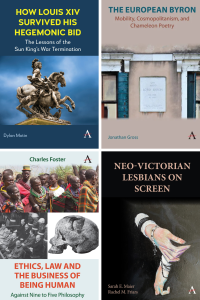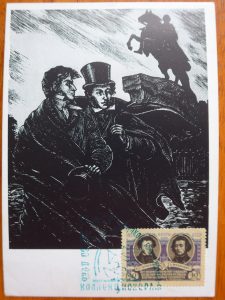Ada, meet Ada: bridging the two cultures
This is a guest post by Mark Seligman, author of AI and Ada: Artificial Translation and Creation of Literature
Artificial intelligence has suddenly become real – or has it? To answer the question, we need a consensus definition of intelligence. We still don’t have one.
In the age of GenAI (ChatGPT and siblings), related definitional challenges spring up like mushrooms: What is language? What is understanding? Do current bots display such, or are we just anthropomorphising glorified text completion programs (as linguist Noam Chomsky contends)? And even if we can arrive at working definitions sufficiently broad to cover not only programs but also people – and animals, and aliens we may someday encounter – what will the definitions imply for the profoundest human concerns, as expressed in linguistic art – in the hyperconscious literature of Vladimir Nabokov, for instance? (Nabokov himself would bitterly ridicule the notion that machines could comprehend, much less create, true art of any sort.)
Well … fools rush in. By profession, I’m a linguist turned AI-nik. By avocation, I’m a lover of literature, at times overly focused upon Nabokov. I see no contradiction between love of language science and love of language art – only continually frustrated romance, as C.P. Snow’s Two Cultures remain unreconciled. Can this marriage be saved?
So I leapt at an invitation to contribute, for a volume on language preservation, an assessment of the potential for artificial translation of literature – despite the reputational risks!
The foremost challenge was clear at the outset: automatic extraction and conveyance of the many aspects of an original work that a translation, artificial or not, might strive to capture. Rather than a single essence, any literary piece will infuse many, with the relation between literal meaning and artistic elements like rhyme and meter especially problematic. To me, though, such problems offered an irresistible opportunity to revisit the notorious duel between Nabokov and his erstwhile friend, critic Edmund Wilson, concerning Nabokov’s hyperliteral translation of Pushkin’s long poem Eugene Onegin. I did not resist, and, with this infamous fracas as a springboard, I undertook analysis of various avenues for improvement of automatic translation. In the process, I made the case that artificial translation beyond the literal could be seen as an optimisation problem – mother’s milk to machine learning mavens: because it will often prove impossible to perfectly convey all aspects or essences of a text in a single translation, the translator must search for some optimal compromise or perhaps deliver multiple variant translations. I emerged with the wary conclusion that, after all, artificial translation of literature could already be useful … if the lack of artificial emotion and aesthetic judgment were understood and if humans were kept well in the loop to compensate.
That judgment turned out to be overcautious. Only two years later, improvements in artificial translation overall had emboldened me to examine possibilities for artificial literary composition. Following a somewhat idiosyncratic tour of the state of the AI art, and keeping Nabokov as a reference point, I sampled numerous elements of his bag of tricks – glorying in memory, repetition to establish themes and motifs, allusion to wide-ranging works and facts, intricate puzzle posing and relentlessly careful structuring at multiple levels of the text – and speculated about current AI’s chances of reproducing each. Those odds often appeared better than even, for better or worse; but I was at pains to insist that the real goal was to understand not artificial capabilities but human ones.
This second essay had outgrown its planned publication venue, and I spent a couple of years sporadically seeking a new one. The search was interrupted by the ChatGPT moment – and, in light of it, the urgent need to update both pieces, the published and the unpublished. And just then, à la bonne heure, I came across Anthem’s call for work straddling art and science. Ahah! Getruffen, in Mom’s Yiddish.
The resulting book as contracted, however, would require a third act: it would be necessary not only to reassess the prospects for artificial translation and composition of literary text using the new technology but also to put that tech through its paces and, so far as possible from our present viewpoint, to explain the outcomes. And this effort would willy nilly return us to the vexed definitional questions with which we began: what are intelligence, language and understanding, anyhow?
Where angels fear to tread, indeed. And yet, afflicted with the conviction that I had after all learned something about these foundational puzzlements, I charged once more unto the breach.
I defined Intelligence (capitalised, to denote a definition purposefully limited in scope) in terms of conditional (if/then) expressions in the service of goal-directed behaviour. I characterised neural networks as configurations of billions of automatically learned conditional expressions, gaining abstraction through arrangement in layers. So yes, current chatbots do exhibit Intelligence, so defined.
Nothing daunted, I went on to define Language as minimally the ability to affect the Patterns (concepts) in an interlocutor’s Pattern Processor (brain, computer) through transmission of a single Token of a Symbol Pattern. Grammar was then defined as adding the capability to handle multiple Tokens within the short-term memory span of the conversational parties’ Pattern Processors. And I concluded that, pace Chomsky (and Nabokov’s shade), current chatbots do employ both Language and Grammar, so defined.
Still, allowing that GenAI bots do evince Intelligence, Language and Grammar, how do these newbie prodigies fall short of a Nabokov? A survey of the shortcomings followed. Unsurprisingly, dependence on humans for other than ersatz emotion remains a standout.
Then there was nothing for it but to venture a trial run. I challenged a recent GenAI bot to several literary labours: literal and artistic Russian>English translation of Pushkin’s verses; analysis of a beloved English-language Nabokov poem, with follow-up questions; and composition of an original tribute to, or parody of, that same poem. (The tribute’s topic was to be an experience of my own, lovingly described in prose and meant to resonate with the deep emotion of Nabokov’s poem.)
The results were striking (and, to this prompter, moving), certainly in comparison with any undertakings predating GenAI, but even on their own merits. They did, however, pressure me to justify my judgment that artificial Understanding worthy of the (now defined and capitalised) name was evident throughout.
The tripartite core of the book was now complete and – with the first two chapters retrofitted with notes bringing them up to date – giving a time-travel effect. A Preface and Sendoff provided bookends, offering my personal AI and literary history for bonus perspective, so that the whole became a kind of testament. But the concoction still needed a muse – or better yet, twin muses. Nor did the universe fail to supply them: a pair of Adas, one a Lovelace and, as the first computer programmer, the perfect AI Beatrice; and the other, in Nabokov’s triptych homage to the texture of time, Van Veen’s sister and other half, than whom a better literary inspiration could not be desired.
Hence the title of my homage, AI and Ada: Artificial Translation and Creation of Literature.
Latest Posts

The paradox of Thom Browne: how one designer redefined the suit for the 21st century
This is a guest post by Benjamin Wild, author of Thom Browne In just over twenty years, Thom Browne has achieved something remarkable: he has made the grey suit revolutionary....

The Amendments to the Constitution, a pathway to the American experience
This is an interview with Blaine Kaltman, author of Perfecting the U.S. Constitution: 27 and Counting, The Amendments that Shaped America’s Future Q. What made you decide to write a...

Featured releases: September 2025
September marks the gentle shift from summer’s warmth to autumn’s calm, a month of balance and reflection. We are celebrating this month with an exciting line-up of new releases. From...

Byron’s engagement with Eastern European writers: Mickiewicz and Pushkin
This is a guest post by Jonathan Gross, author of The European Byron Mobility, Cosmopolitanism, and Chameleon Although there have been many studies of Byron’s European impact, I consider the...

